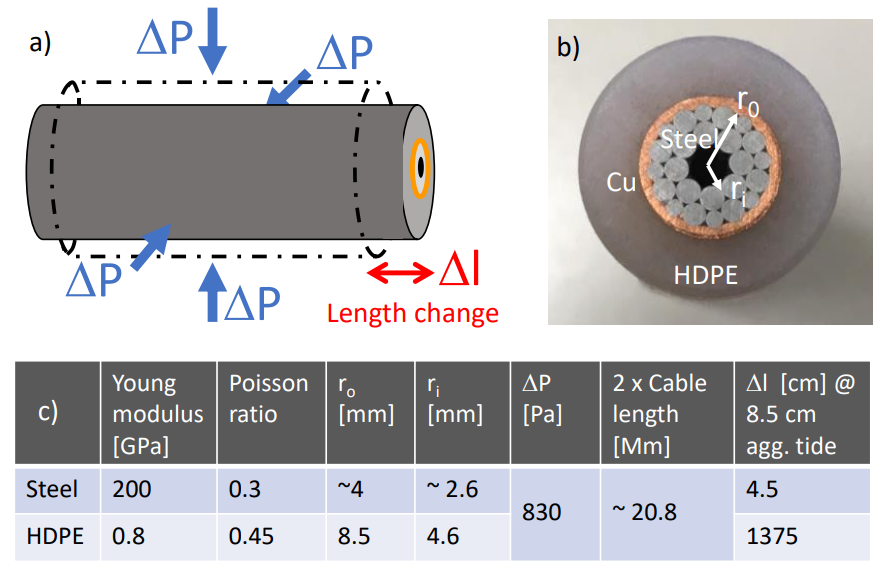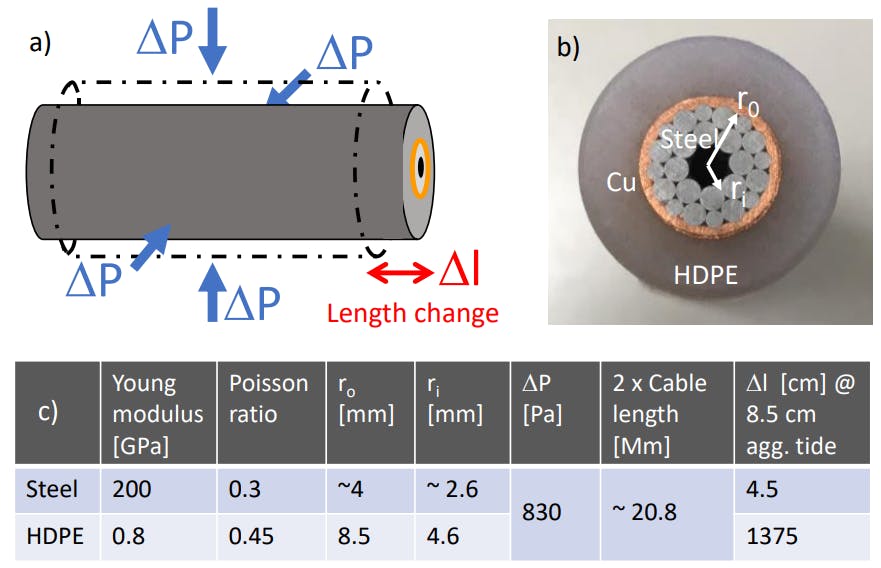Author:
(1) Lothar Moeller, SubCom, Eatontown, NJ 07724, USA, [email protected].
Table of Links
GPS Long-Term Stabilized RF Phase Meter
Simple and Accurate models for tides
Latency Variations on Transpacific Cable
Poisson effect on pressurized cables
Conclusions, Acknowledgments, and References
5. POISSON EFFECT ON PRESSURIZED CABLES
The Poisson ratio from material science describes a longitudinal expansion of a body caused by lateral compression of its volume. We attribute the fine structure in the MPD to this effect. In a simplified picture, an increased static water pressure on the ocean floor due to high tide compresses the cable in a radial direction, which extends it along its

longitudinal axis (Fig. 4a). Friction conveyed by gel inside the cable tube transfers the expansion of the cable jacket into fiber stretching. As the probe’s propagation velocity stays nearly unaffected by fiber stretching, a length increase relates directly to a larger MPD[8]. The cross-section of modern subsea cables is mainly built of steel wires (stability), a copper conductor, and a HDPE insulation (Fig. 4b). We estimate limits for the Young modulus ‘E’ and Poisson ratio ‘’ of this composite by assuming the body either consists only of the steel wires or the HDPE tube. Under a pressure enhancement DP the length change Dl for a cylinder with an effective inner and outer radius (ri, ro) and a length L0 reads (Lamé’s Equation[9])

An avg AT level of ~8.5 cm leads to a predicted cable length change of ~4.5 cm or a MPD of 3.2° when modelling the cable as steel tube. The avg MPD after subtracting its linear phase tilt agrees surprisingly well with these estimates and reads ~3.4°. Note: for simplicity we assume the cable as a straight line with open ends for which Eq.1 holds. More accurate approximations consider the small meander shape of deployed cables and flexible, rather than rigid, coupling between cable jacket and fiber. The relative length variations a cable experiences due to tides are orders of magnitude smaller than its stretching during installation.
We performed shorter recordings on a transoceanic cable system with approx. 13.5 Mm length from May 18 to May 25, 2018 and found qualitatively similar results with respect to MPD, MPD tilt, and tide dynamics.
This paper is available on arxiv under CC BY 4.0 DEED license.

